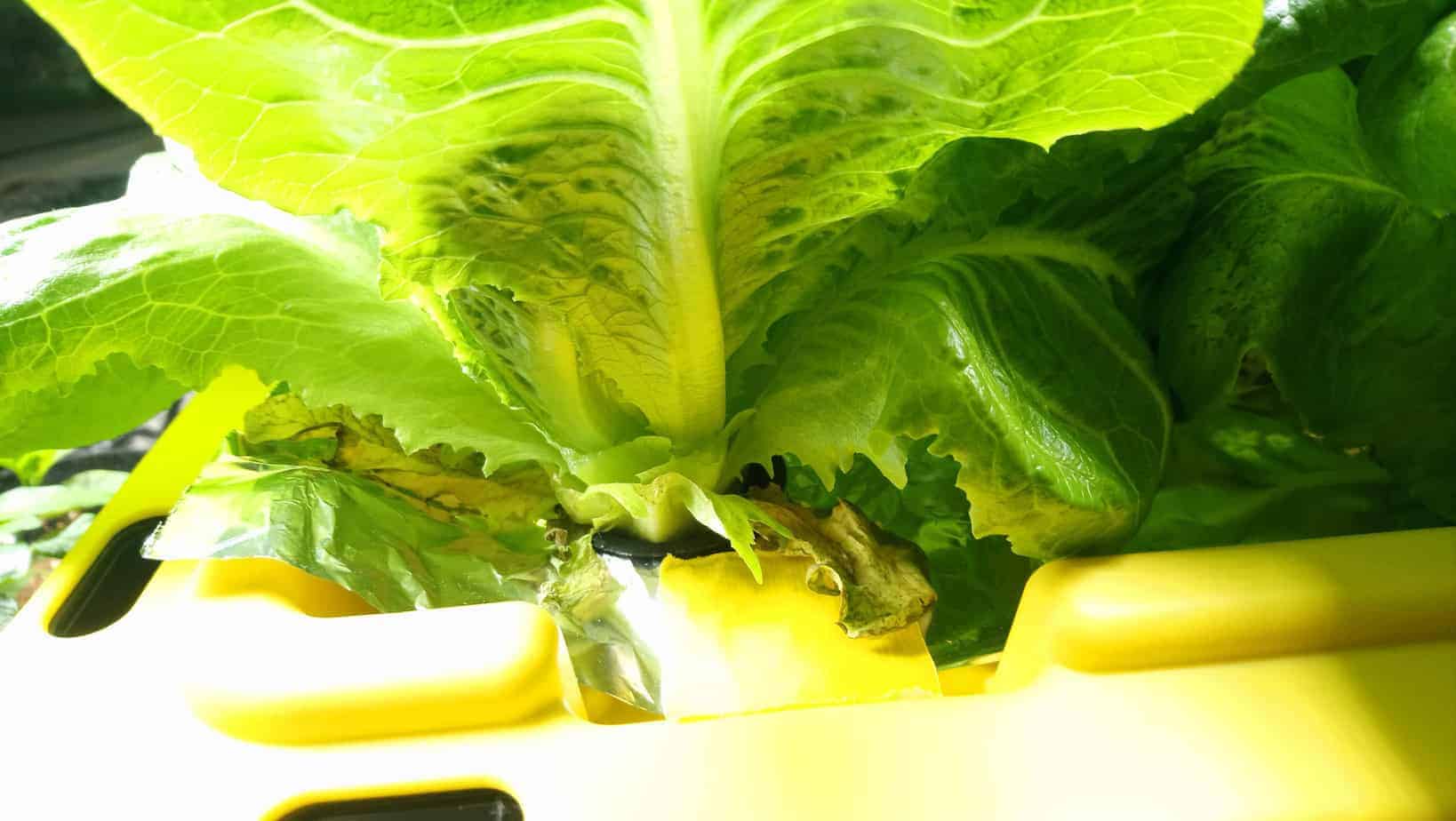If you want to grow romaine lettuce at home, start planting Parris Island Cos Romaine lettuce. This is one of those times when an heirloom vegetable not only has superior flavor to commercially grown hybrids, but also produces excellent yields.
This heirloom lettuce dates back to the 1950s and has been the preferred choice of romaine lettuce for organic market growers and recently has surged in popularity among home gardeners as well. It’s named after Parris Island off the coast of South Carolina.
On this page:
Profile: Parris Island Cos Romaine Lettuce
One of the best romaine lettuce varieties in terms of flavor, texture, and yield
Type: Romaine/Cos
Days to Maturity: 55 to 75 days
Open Pollinated: Yes (Heirloom)
Height: up to 12 inches
Get seeds: Baker Creek (US), Johnny’s Selected Seeds (US), Victory Seeds (US), High Mowing Organic Seeds (US), West Coast Seeds (Canada), Veseys (Canada), Kazco (UK), Succeed Heirlooms (Australia), The Seed Collection (Australia)
Parris Island lettuce is a Romaine/Cos type of lettuce which produces large, upright, lobe-shaped, verdent green leaves with a crispy central rib. The leaves are flavorful and not bitter; in fact, even when starting to bolt (produce a flower stalk), its leaves turn bitter more slowly compared to other varieties.
While it takes around 55 to 75 days to harvest mature heads, it can be harvested in as little as 28 days for baby lettuce, and depending on growing conditions, you can harvest individual leaves earlier than 50 days.
Parris Island lettuce is also resistant to mosaic virus and tipburn.
Planting Parris Island Cos Romaine Lettuce
As with all lettuce, Parris Island can be started indoors or direct sown outdoors. The best times to plant lettuce seeds are in early spring (for spring/summer harvests) and mid to late summer (for fall harvests). While you can grow lettuce in the summer, lettuce will go to seed very quickly in the summer heat.
For early spring planting, you can direct sow as soon as the ground is workable (not frozen), but seedlings will grow very slowly in cold weather. You can give them a head start by sowing indoors 4 to 6 weeks before your average last frost date and transplant when the threat of frost has past.
Sow seeds about 1/4 inch deep. If direct sowing, sow a few seeds per planting hole at least 10 to 12 inches apart and thin out to 1 seedling per hole. You can also sprinkle along the row and thin out to 10 to 12 inches later. You can plant Parris Island closer but leaves will be smaller.
For fall harvests, plant seeds around 8 to 10 weeks before your average first frost date. This will ensure your plants can mature before the cold slows down their growth.
Taking Care of Parris Island Cos Romaine Lettuce
Parris Island lettuce is very easy to take care of and has few pest issues.
The main threat to lettuce is early in the season when slugs and hungry rabbits can quickly devour seedlings. Physical barriers at least 3 feet high can stop rabbits but slugs are difficult to deal with if you don’t want to use commercial slug bait. Sowing lettuce seeds indoors and transplanting when they are a few inches tall will deter slugs which prefer smaller sprouts.
Lettuce does not need much fertilizer, but responds really well to higher nitrogen levels. Liquid feeds every 7 to 14 days or granular fertilizer applied every 1 to 2 months is more than enough. You can also amend your soil with coffee grounds or other gentle organic fertilizers that have good nitrogen levels.
Harvesting Parris Island Cos Romaine Lettuce
The preferred way to harvest homegrown lettuce is by using the cut-and-come-again method. This involves harvesting the outer mature leaves of your lettuce plants while leaving the small, central leaves to continue growing.
Harvesting your Parris Island lettuce this way will allow you to have more frequent harvests instead of harvesting a whole head and then waiting to grow another head of lettuce.
Although Parris Island is a Cos/Romaine lettuce and therefore forms a head instead of loose leaves, the leaves can still be harvested separately if you use scissors to carefully cut the base of each leaf’s central rib.

Growing Parris Island Cos Romaine in a Pot – Can It Be Done?
You can absolutely grow Parris Island lettuce in containers. I recommend a minimum of 1 gallon pots for full-sized lettuce, however, you can get smaller but equally delicious leaves in smaller pots. In fact, you can grow one plant in one of those red plastic drinking cups and it will produce mini romaine lettuce leaves for salads. You can even grow them in reused plastic ice cream or yogurt containers.
Nutrients can quickly get depleted when growing lettuce in pots, especially small ones. Lettuce is not a heavy feeder, but amending your soil or potting mix with a high-nitrogen fertilizer before transplanting will give you faster, larger yields. If you are using fresh potting mix already pre-mixed with fertilizer granules, you may not need to add any more fertilizer due to lettuce’s short life cycle.
Pro-Tip: Lettuce can survive light frosts, but will die after a deep freeze. You can bring your potted lettuce plants close to your house or apartment wall, where radiant heat will keep your lettuce a few degrees warmer. Alternatively, for a temporary hard frost, you can bring your lettuce indoors until the freezing weather passes.
Speaking of indoors, you can grow Parris Island romaine lettuce indoors under grow lights. You do not need powerful lights; cheap LED grow lights or fluorescent lights at least a few inches away from your lettuce plants will suffice. Make sure not to keep them too close to the lights or the leaves may overheat and cause your Parris Island lettuce plants to bolt.
